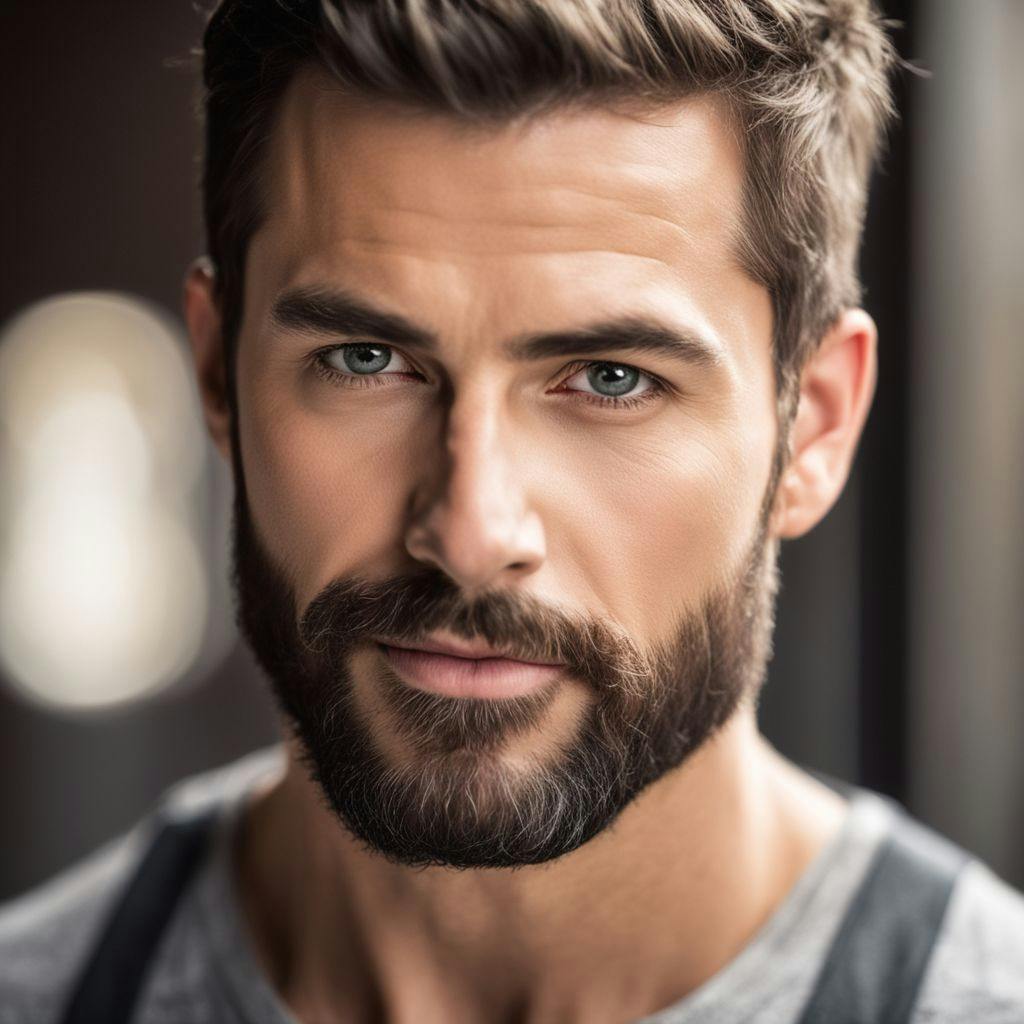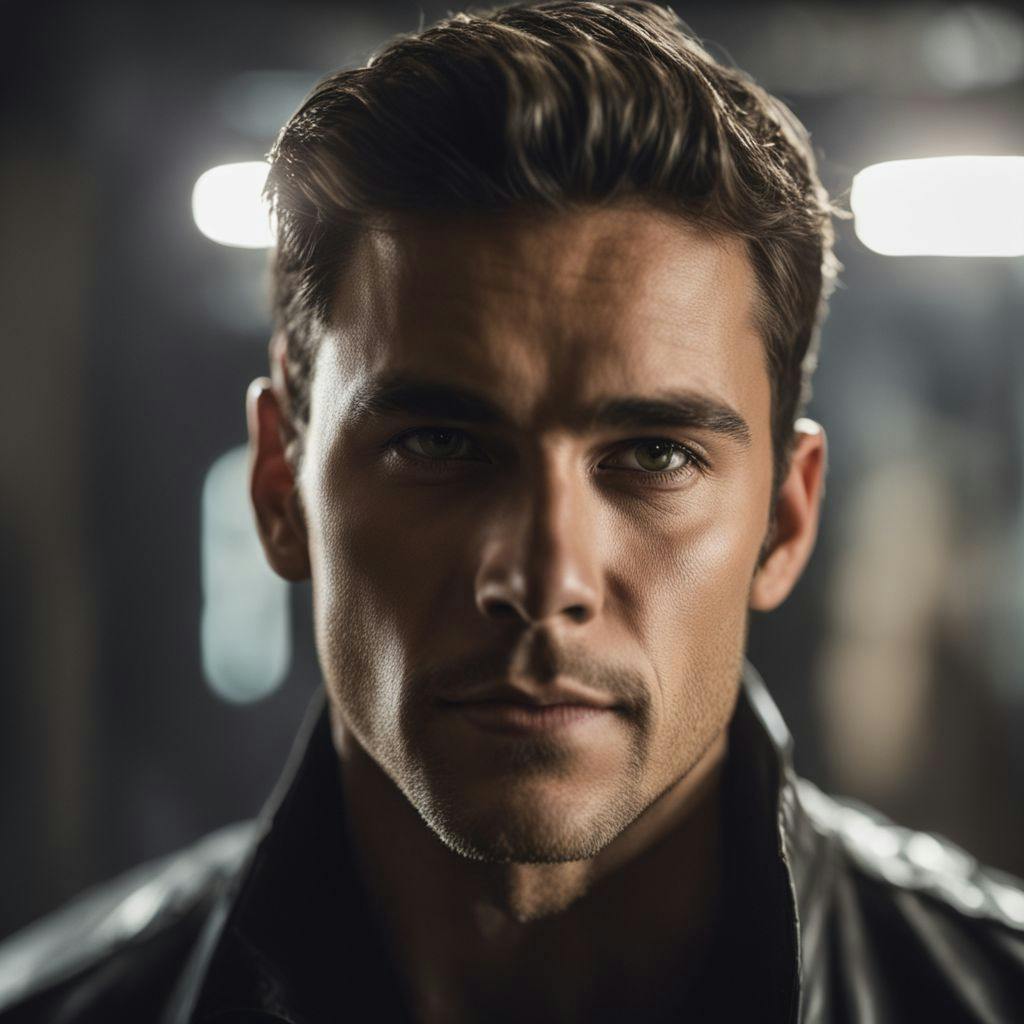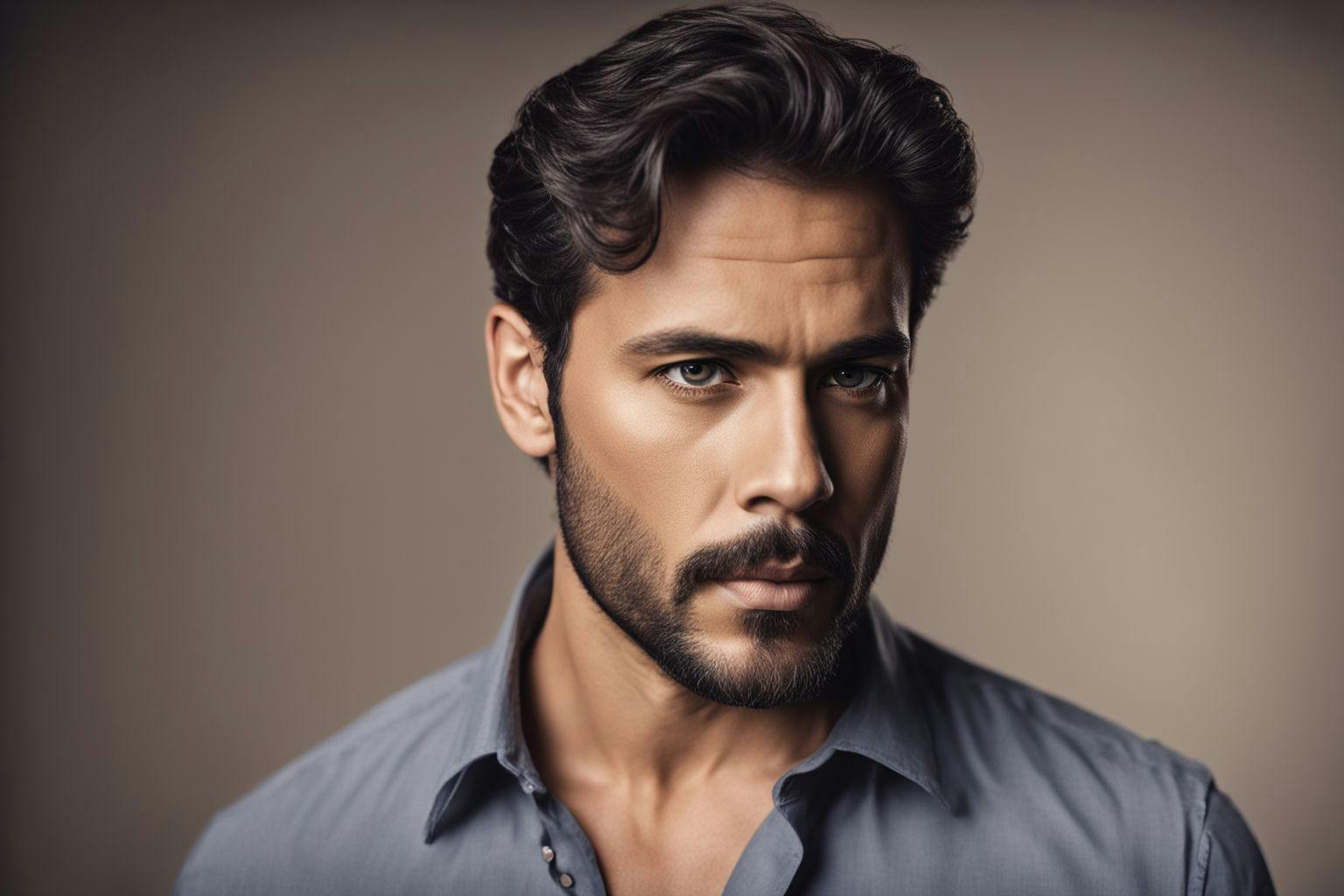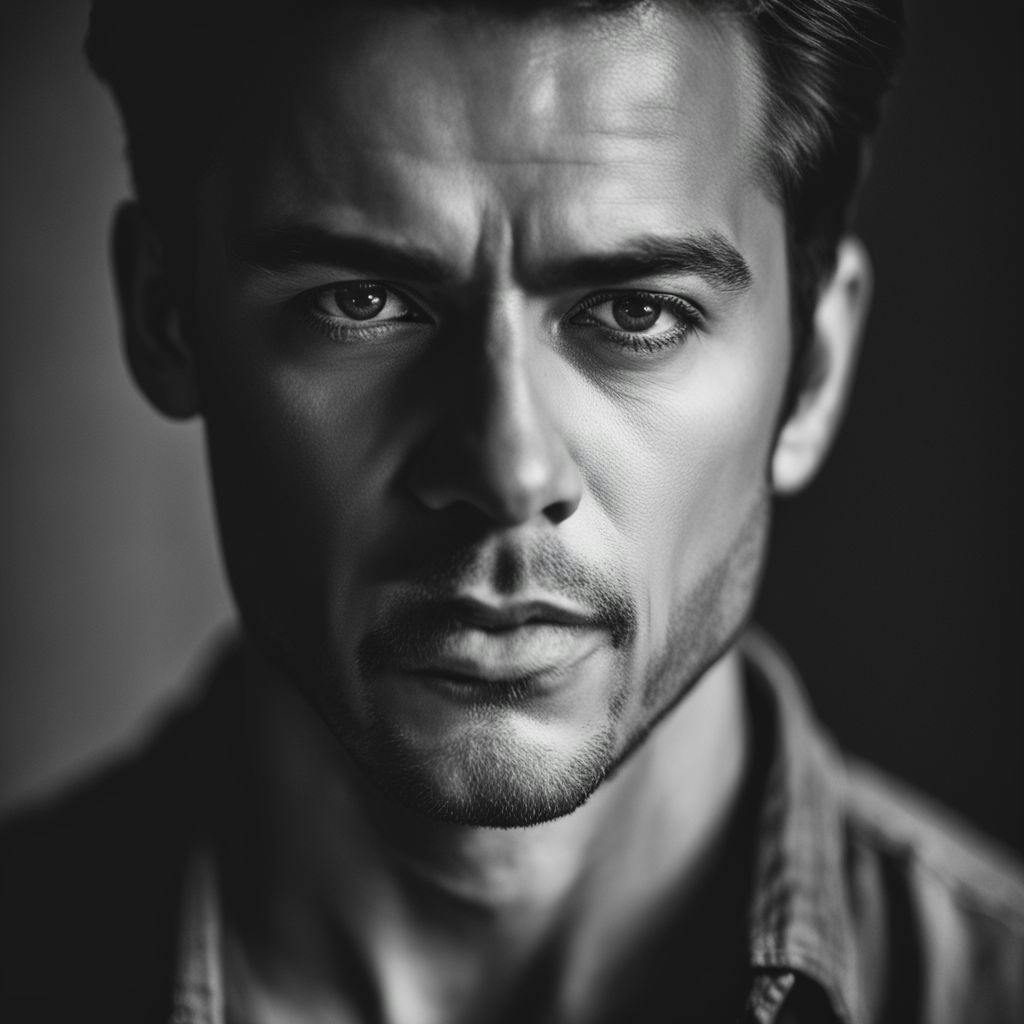
Mastering Male Actor Headshots: Top Tips

In the cutthroat world of acting, a headshot is not just a photograph—it's your ticket to success. It's crucial to understand that your headshot is your personal brand logo, the first thing casting directors see, and can significantly impact their judgement about you. This blog post will guide you through the importance and anatomy of a great headshot, tips on how to dress, the different types of headshots, and how to express and pose yourself. We will also delve into the debate between hiring professional photographers versus DIY, basics of retouching, and finally, an exciting new way to get professional headshots with Real Fake, an advanced AI technology.
Importance of Headshots
Hey there! Let's talk about something really crucial in the acting world - headshots! Yes, you heard it right. Headshots are incredibly important for actors, much like a logo for a brand. Think of it this way: your headshot is your personal brand logo. It’s the first thing casting directors see, and trust me, they make snap judgements based on it. This phenomenon is called "thin slicing". People, including casting directors, form an opinion about you within a few seconds of seeing your headshot. So, it's super important to make an impact in that short amount of time.
Now, what does a good headshot do? It showcases your best features, your personality, and your acting range. It's not just a picture of your face; it's an essential tool that can open doors for you in this industry. It could be the difference between being noticed by a casting director and being passed over. So, it's not just about looking good, it's about looking right for the role you want.
A professional headshot is not a selfie or a casual photo taken by a friend. It's a carefully crafted image that conveys a specific message about who you are as an actor. It's about finding the right photographer, setting the right mood, and striking the right pose.
Remember, it's not just about making a first impression. It's about making a lasting impression. After all, you won't get a second chance to make a first impression, so make your shot count. So, if you're serious about your acting career, investing in a professional headshot is not just recommended, it's essential.
In the following sections, we'll dive deeper into the anatomy of a great headshot, dressing tips, and more. So, stay tuned!
Anatomy of a Great Headshot

Hello again, aspiring actors! Now that you understand the importance of a good headshot, let's dive into the nitty-gritty – what makes a headshot truly great?
First off, let's talk about lighting. You don't need to be a photography expert to understand that poor lighting can ruin a picture. The best headshots are brightly lit, with no weird shadows hiding your features. This technique, known as high key lighting, helps to separate you from the background, highlighting your face.
Secondly, a great headshot is all about the eyes. They should be the sharpest part of the image, drawing the viewer in. When the eyes are in focus, they appear bright and alive, creating that all-important connection. You know the saying, "the eyes are the window to the soul"? In acting, your eyes can convey a wide range of emotions, so let them shine!
Next up is composition. This is how the photo is set up, including aspects like your pose, the framing, and the background. A good rule of thumb is to keep it simple. You want to be the star of the show, so avoid busy backgrounds that can distract from your face. Remember, this photo is all about you, not the scenery!
Then, we have the expression. It's crucial to look pleasant and approachable in your headshot. Think of it as a commercial for yourself. You want to come across as someone easy to work with, radiating a blend of confidence and friendliness. You don't necessarily need to grin like a Cheshire cat, but a warm, genuine smile can work wonders.
Lastly, let's not forget about styling. Show up looking your best. This doesn't mean you need to wear a tuxedo, but your clothes should be neat and reflect your personality. Think of your headshot session as the ultimate job interview – you want to look like you're there to get hired!
To sum up, a great headshot is a perfect blend of technical aspects and personal charm. It's not just a picture; it's the visual representation of you as an actor. So make sure it's a good one! In the next sections, we'll delve into dressing tips and more, so stick around!
Dressing for Headshots

Howdy, future stars! Now that we've covered the importance of headshots and what makes a good one, let's tackle another crucial aspect – what to wear! Believe it or not, your clothing choice can make or break your headshot. It's not just about looking dapper; it's about sending the right message. So, let's dive in.
First things first, let's talk color. While it's tempting to wear your favorite neon shirt, bold, rich colors tend to photograph best. However, the golden rule is to choose shades that compliment your hair and complexion. Not everyone is a fan of bold colors, and that's perfectly okay. Lighter shades can look just as good, especially if darker colors make you look washed out. If you're stuck deciding, don't hesitate to ask your partner, a trusted friend, or even your photographer for their opinion.
Next up, let's address the style. The role of your clothing is to enhance your appearance and help convey the character types you wish to play. So, think about the roles you want and dress accordingly. If you're aiming for lawyer roles, a smart suit could be the ticket. On the flip side, a casual t-shirt and a bomber jacket might be more suitable if you're after the 'love interest' or 'boyfriend' roles. The key here is variety. Having multiple options can give casting directors a glimpse into your versatility.
For you ladies out there, whether you're going for a doctor role or the cynical private investigator, your clothing can help express that. A semi-formal outfit might be ideal for the former, while dark clothing with a leather jacket could suit the latter.
Lastly, remember simplicity is your friend. Models, for instance, usually go for basic, neutral clothing like black or white tank tops or t-shirts. This allows the focus to remain on you, not what you're wearing.
Just remember, it's crucial to still be recognizable in your headshots. Your clothing should compliment you, not overshadow you. It's not rocket science; it's just about being mindful and a bit strategic. In the next sections, we'll explore more about headshots, so stay tuned!
Types of Actor Headshots
Hey, you! Yes, I'm talking to you, aspiring actor. You've learned about the importance of headshots, the makings of a great one, and dressing to impress. Now, let's delve into the different types of actor headshots and when to use each of them.
First off, we have the classic Actor's Headshot. This is the bread and butter of your acting portfolio, the one you'll probably use most often. It's usually shot in a vertical orientation, focusing on your head and shoulders. The goal here is to present a clear, professional image of you that showcases your versatility. It's the headshot you'd typically submit for auditions and casting calls.
Next up, we have the Beauty/Modeling/Makeup Headshot. This one's all about aesthetic appeal and is often used by actors who also do modeling work. The makeup is on point, and the lighting is perfect. It’s an excellent option when you need to show off your photogenic side, or if you're aiming for roles that require a high-fashion or glamorous look.
Last but not least, we have Your Headshot. No, that's not a typo. This one's all about you, your personality, and your brand. Remember, a headshot is often the first impression you make, so it should reflect who you are. This type of headshot is more personal and is often used on social media platforms or personal websites. It allows casting directors to see you as a real person, not just another face. It's also your chance to stand out and be memorable.
So there you have it, the three main types of headshots every actor should have in their toolkit. Each one serves a unique purpose and can be your ticket to landing the role of your dreams. Remember, it's not just about having a stunning headshot, but the right headshot. Now that you're armed with this knowledge, go forth and conquer the acting world. You got this!
In the following sections, we'll discuss posing tips, working with photographers vs. DIY, and even some retouching basics. So, don't go anywhere. Stay tuned and keep on shining, superstar!
Posing and Expression Tips

Hello, soon-to-be stars! Now that we've covered the different types of headshots, let's move into another essential aspect—posing and capturing genuine expressions.
When it comes to posing, you might feel a bit awkward at first. Don't worry; it's perfectly normal! One trick to overcome this is to practice in front of a full-length mirror. This will help you understand your angles and how to create those flattering lines with your body. Focus on the tilt of your head, the position of your hands, and even the angle of your feet. Remember, every small detail can make a big difference and convey a variety of emotions.
Now, let's talk facial expressions. It's not all about flashing a big smile, although a warm, genuine grin can add a friendly touch to your headshots. But here's the thing: as an actor, you need to be able to portray a broad range of emotions. So, don't shy away from practicing different expressions in front of the mirror. From joy to sorrow, love to anger, your face should reflect an array of feelings.
Try to make a list of key emotions and practice expressing each one. It might feel a bit silly at first, but trust me, it's worth it. After you get the hang of it, invite a friend over and see if they can guess the emotion you're trying to convey. It's a fun way to practice and improve your skills.
Remember, your hands can also play a significant role in your expressions. They can be under your chin, in your hair, or even shaping your face. Try combining different hand positions with your facial expressions and see what works best for you.
Lastly, don't be afraid to use props. They can add an interesting dynamic to your poses and help you react more naturally. It could be anything, from a hat to a beach ball.
All in all, mastering your poses and expressions is a skill, and like any skill, it requires practice. But don't stress too much about it. Be patient, keep practicing, and most importantly—have fun with it. You got this! In the next sections, we'll explore working with photographers, DIY options, and retouching basics. So, stay tuned and keep on shining!
Working with Photographers vs DIY
Hey there, acting enthusiasts! Now that we’ve covered the basics of headshots, let's delve into the big question: should you hire a professional photographer or go the DIY route? Both options have their merits, so let's break it down!
First up, hiring a professional photographer. Pros? You’re paying for their skills, experience, and equipment. They know the ins and outs of lighting, composition, and angles, which can make a world of difference in your headshots. They'll also have an array of gear to ensure your shots look top-notch. Plus, they're usually flexible with scheduling and can work around your availability. And hey, let's not forget the time you'll save by not having to learn all the photography skills yourself!
But, there are a few cons to consider. Professional photographers can be expensive, and you might not always get exactly what you envisioned. Also, depending on the agreement, you may not own the full rights to your images.
Now, let’s consider DIY. The biggest perk? You're in control. You know your angles and expressions best and can experiment till you get the perfect shot. Plus, no waiting for photographer availability or dealing with third-party communication. And of course, you'll own full rights to your photos.
However, DIY has its downsides too. The learning curve for photography skills can be steep, and you might need to invest in high-quality equipment. Also, balancing the technical aspects with posing and expressing can be tricky, and if not done right, your headshots might not look professional.
In essence, the choice between a professional photographer and DIY depends on your needs, budget, and time. Both routes can yield great results if approached correctly. So, consider your options, make an informed decision, and remember - the best headshot is the one that captures you at your best! Stay tuned for more headshot tips and tricks in the upcoming sections!
Retouching Basics
Hi there, future silver screen stars! Now that we've covered everything from the importance of headshots to posing techniques and the professional vs. DIY debate, let's dive into the final (and often overlooked) step in the headshot journey - retouching.
Now, don't panic. We aren't talking about turning you into a completely different person. The goal here is to enhance your best features and create a clean, polished image. So, let's break it down, shall we?
Firstly, let's talk about facial features. In the post-production phase, it's essential to handle delicate areas like eyebrows and eyelashes with care. You want them to stand out, but not overpower your face. A common technique is to subtly darken and sharpen them, making your eyes the central focus of the image.
Next up is cleaning up the outline of the neck and shoulders. If you have any stray hair along your neckline, it can be easily removed using various tools like the healing brush. Remember, it's all about creating a smooth and clean silhouette.
Now, let's move on to the skin. We all have blemishes and imperfections, and that's perfectly okay. However, for a professional headshot, you might want to do a bit of spot healing. This doesn't mean you should erase every single freckle or mole. Instead, focus on temporary blemishes like pimples or redness. The key here is subtlety - you still want to look like yourself, just a bit more polished.
Lastly, it's crucial to maintain a consistent workflow. Start from the larger issues and work your way down to the minute details. This ensures that you don't miss anything and helps maintain a natural look.
Remember, while retouching can enhance your headshot, it shouldn't define it. Your headshot should still look like you, not an airbrushed version of you. Practice these techniques, be patient, and most importantly, have fun with it. You're on the journey to becoming a star, after all! In the next section, we'll introduce an exciting new way to get professional headshots, so stay tuned, folks!
Easy Actor Headshots with Real Fake
Hello again, superstars in the making! By now, you've got all the information you need to create a stellar actor headshot. But what if I told you there's a way to get a professional headshot without leaving your home or even hiring a photographer? Sounds too good to be true, right? Well, welcome to the future of headshots with Real Fake!
Real Fake utilizes advanced AI technology to turn your selfies into professional headshots. Yep, you read that right! All you need to do is upload 10-20 photos of your face, clearly visible, and voila! Within a few hours, your brand-new headshots will be ready. Imagine having a perfect headshot for your LinkedIn profile, CV, or business cards right from the comfort of your couch.
The best part? It's incredibly affordable. With prices as low as 9.99 EUR, you can create your perfect headshot without breaking the bank. Plus, it's super convenient. You can upload, select, and pay all within minutes. No more scheduling issues or waiting for retouched images.
But don't just take our word for it. Real Fake is trusted by professionals worldwide, with over 10,000 satisfied customers from top-tier global firms. So, if you're looking to elevate your professional images without the hassle or the hefty price tag, Real Fake might just be the perfect solution for you.
So, why wait? Try Real Fake today and step up your headshot game like a pro. After all, in the world of acting, you're not just selling your talent; you're selling your brand. And a good brand starts with a great headshot. So, go ahead and give it a shot (pun intended), and see the difference it makes. You've got this, superstar! An actor's headshot is their first introduction, their personal brand, and their chance to make a lasting impression. From understanding the anatomy of a great headshot, mastering your poses and expressions, choosing the right outfits, to considering whether to hire a professional photographer or go the DIY route, every decision counts. And remember, even after you've captured the perfect shot, a bit of retouching can make all the difference. However, if you seek an easier and affordable way, Real Fake offers a unique solution that transforms your selfies into professional headshots using advanced AI technology. In the end, it's all about showcasing your best features, your personality, and your acting range with a great headshot.
Frequently Asked Questions
What makes a great actor's headshot?
A great headshot is a perfect blend of technical aspects and personal charm. It's brightly lit, focuses on the eyes, has a simple composition, showcases a pleasant and approachable expression, and is styled to reflect the actor's personality.
Should I hire a professional photographer or take a DIY approach for my headshot?
The choice depends on your needs, budget, and time. Hiring a professional photographer brings their skills, experience, and equipment to the table. However, it can be expensive. On the other hand, a DIY approach gives you control, but requires a learning curve for photography skills and may necessitate investment in equipment.
What is the role of retouching in creating a headshot?
Retouching enhances your best features and creates a clean, polished image. It involves subtly working on delicate areas like eyebrows and eyelashes, cleaning up the outline of the neck and shoulders, spot healing skin blemishes, and maintaining a consistent workflow. The goal is not to alter your appearance completely, but to present a polished version of yourself.
